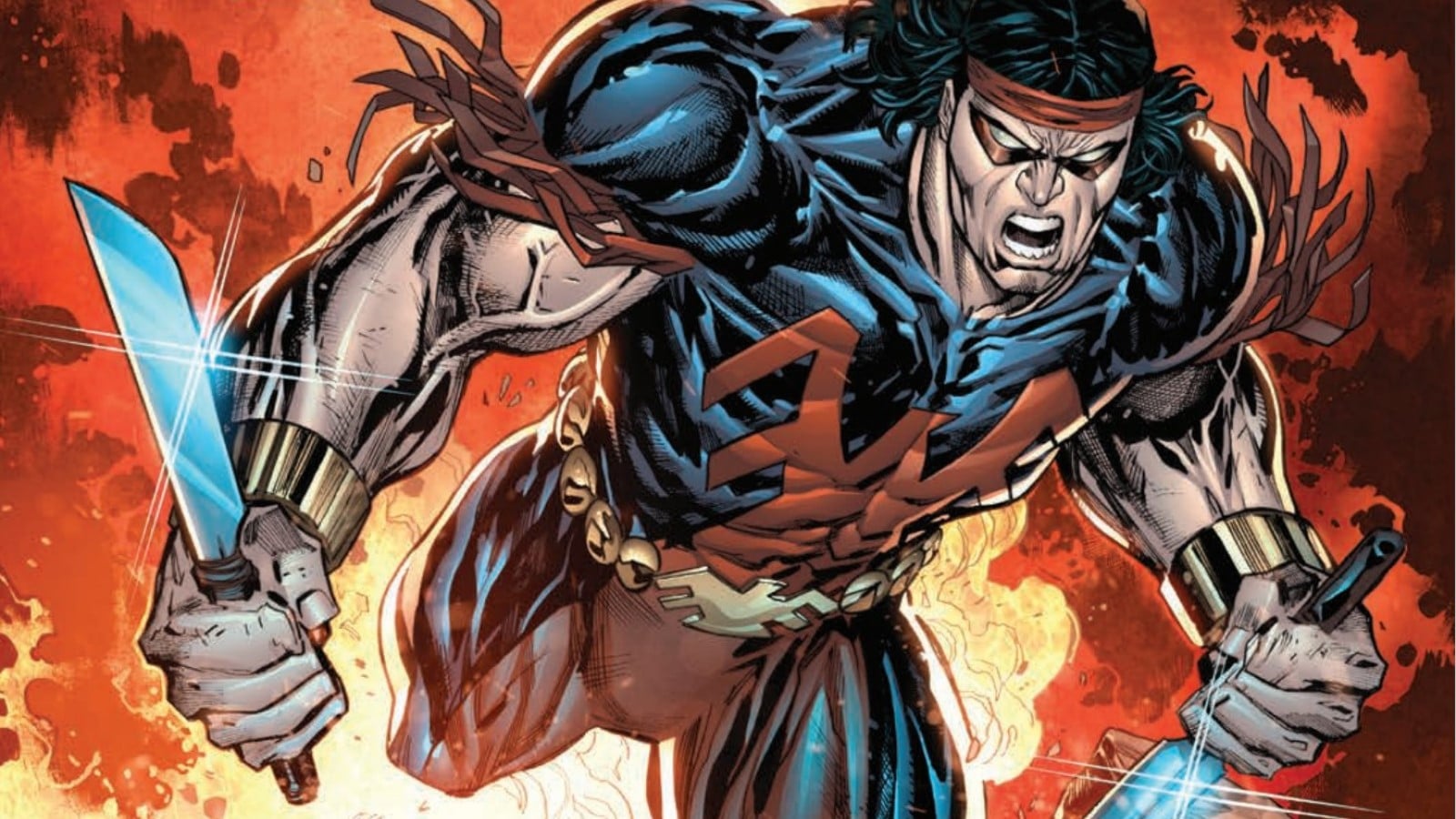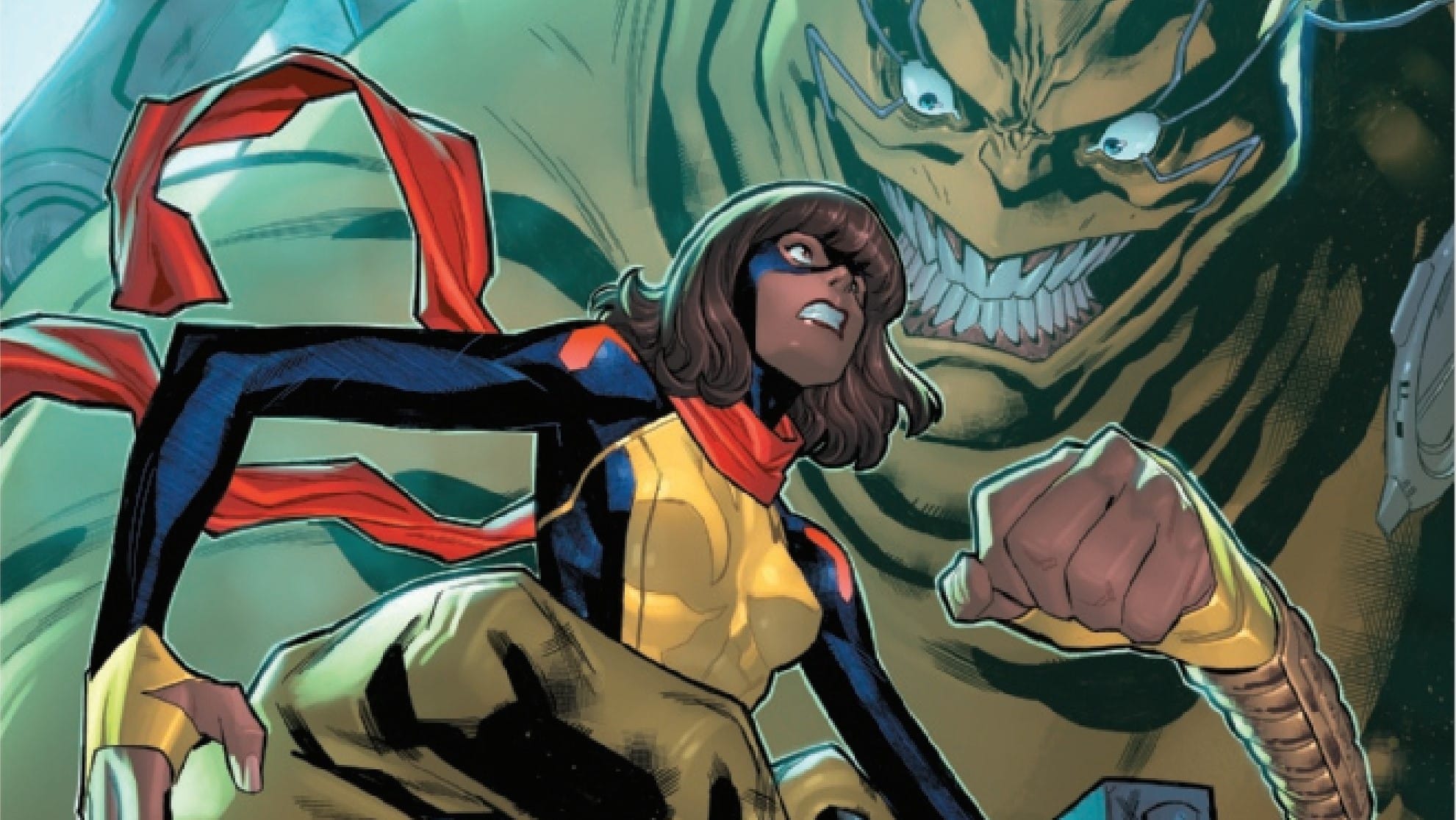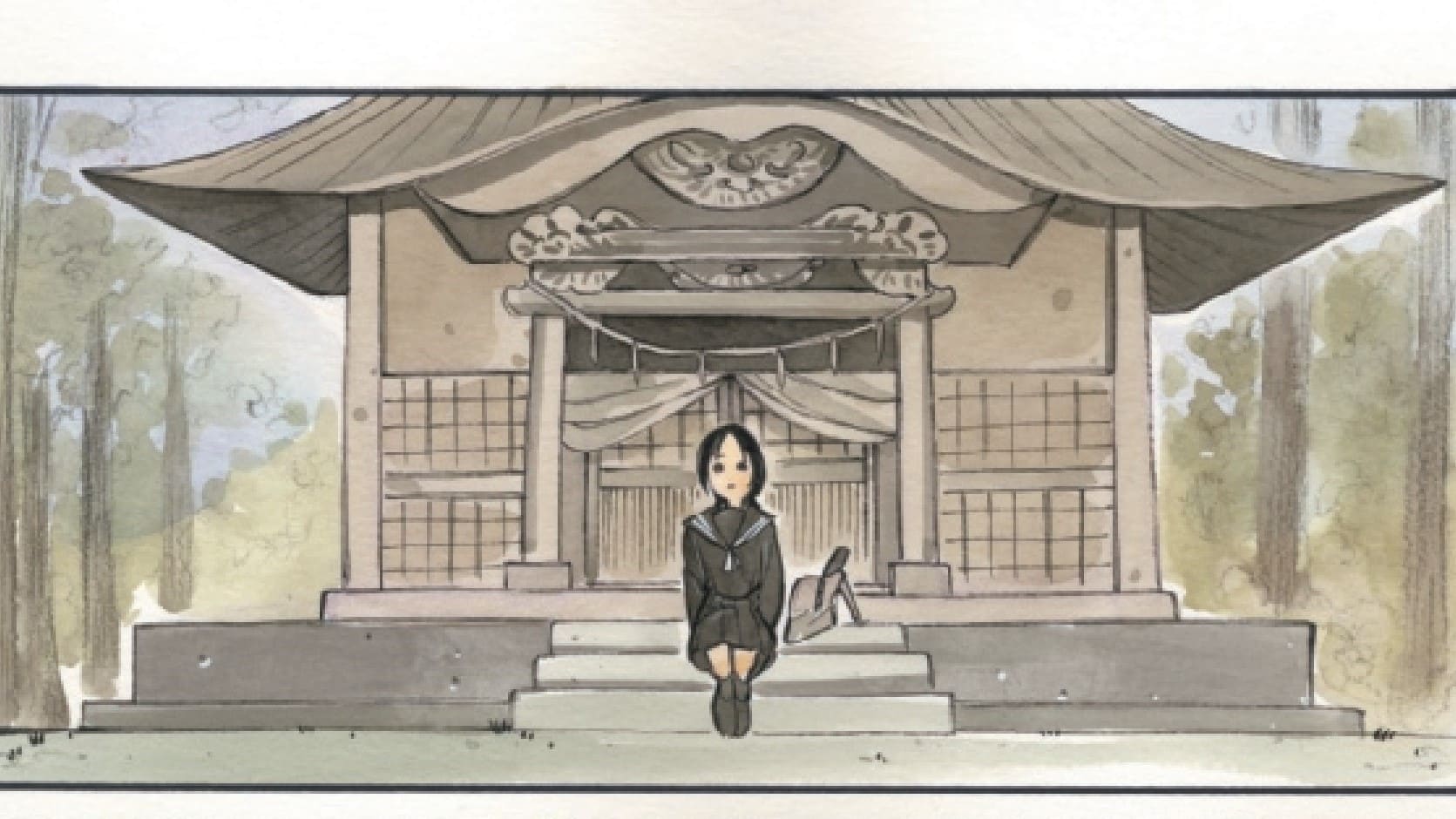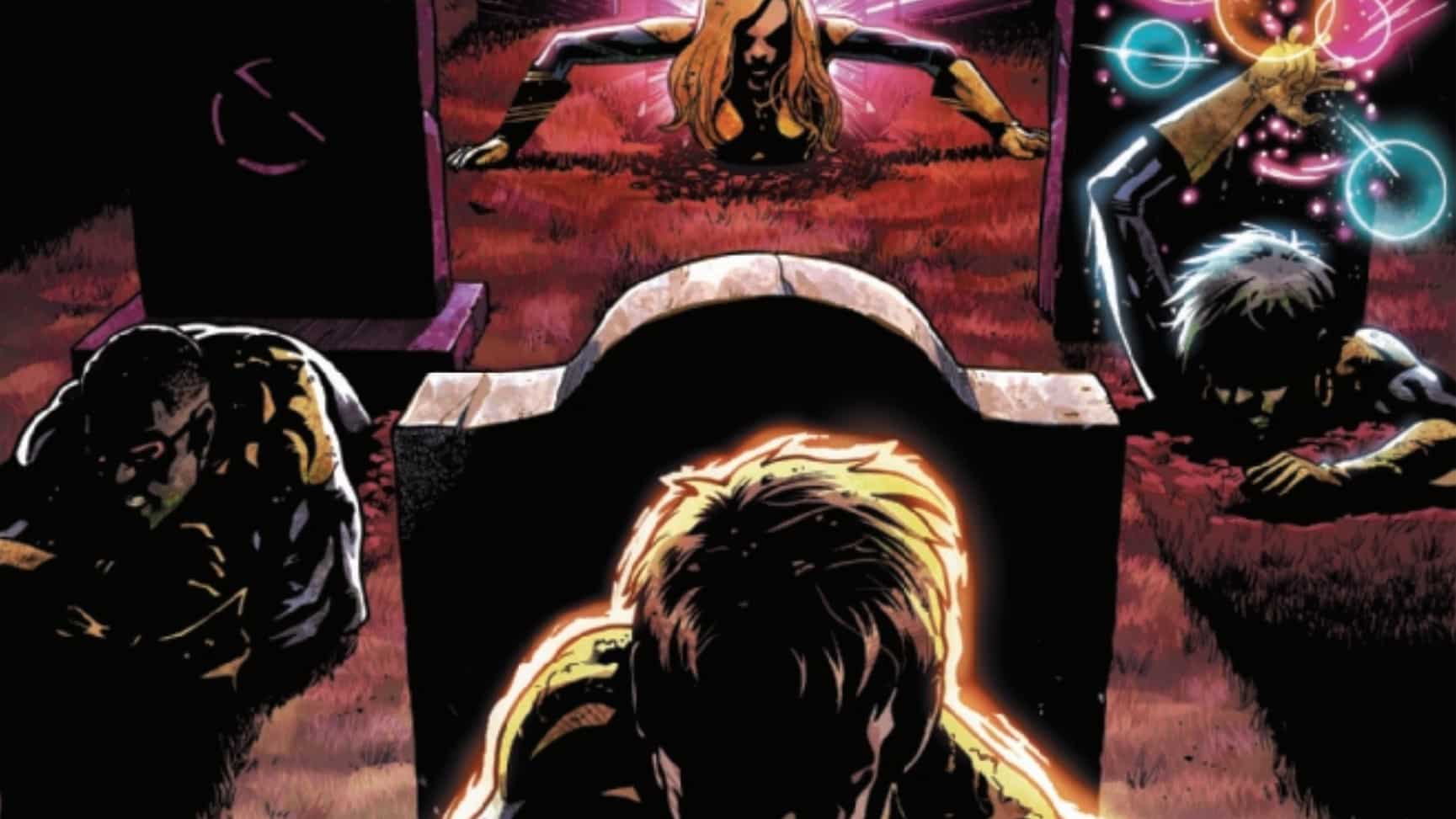Bear with me a moment.
I’m not nostalgic for the X-Men comics of the ’70s and ’80s. I wasn’t born yet, but also, unlike a lot of comic nerds my age, I never got into the cartoon that built off those stories, or found my way into a comic shop with back issue bins. I wouldn’t go back to Giant-Size and the Claremont run until 2014, after I downloaded Jay and Miles X-Plain the X-Men for the first time. I think that’s important context for you to know, because Claremont Nostalgia is one of the primary lenses through which one might view a comic that celebrates the return of not just a long-dead character, but one who died in the first issues of what might be the greatest comic book run of all time. Almost half a century weighs on Thunderbird, but for me, Uncanny X-Men #95 was just a few years back, a story I read during the same year I read New X-Men and “The Draco” and Chaos War, “The Dark Phoenix Saga,” “Nothing Can Stop the Juggernaut,” God Loves Man Kills, “She Lies with Angels” and so on and so forth.
And yet, nostalgia is still the lens through which I read this comic, because I am profoundly nostalgic for Wednesday, Oct. 2, 2019. That day is an entire pandemic away from all of us now, so it feels much farther away in time than it is.
You may recall that 2019 saw the launch of House of X and Powers of X, two comic book series that were one. HoXPoX energized not only my love of the X-Men, but of comics in general. The X-Men felt new again.
Like X-Men, I had somehow missed out on professional wrestling growing up, but I had, around the same time I had started an X-Men pull list at my local comic book shop, begun to tune into Pay Per Views. By 2019, I had settled into both things. I knew what to expect from a new issue of Uncanny X-Men, and I knew what to expect from an episode of Smackdown. I enjoyed both. I knew that both had problems that would limit that enjoyment. I knew to temper my expectations and celebrate those things that surpassed those expectations: the rise of “The Man” Becky Lynch, “Age of X-Man,” Kofimania, New Mutants: Dead Souls, the Firefly Funhouse, X-Men Black: Emma Frost, the Sasha and Bayley Saga, and so and so forth. But Like X-Men, in the summer of 2019, professional wrestling was about to undergo a paradigm shift. Double or Nothing, Fyter Fest, Fight for the Fallen, All Out — each of these stoked my excitement higher and higher. HoXPoX and AEW both showed me I didn’t need to temper my expectations anymore, or at least not in the same way, and not to the same degree.
On Wednesday, Oct. 2, 2019, I annotated House of X #6, and on Wednesday, Oct. 2, 2019, I also was able to attend, in person, the very first episode of All Elite Wrestling: Dynamite, where Riho and Nyla Rose fought to see who would become the first AEW Women’s Champion.
2019 was in a lot of ways an incredible year. In October alone I got to see movies like Parasite and The Lighthouse in theaters. That year I discovered for the first time novelists like Louise Erdrich, Min Jin Lee and Jesmyn Ward, and poets like Christopher Okigbo and Franz Wright. That was the year that my now favorite television series of all time, Fleabag, released its second season. My favorite musical artists, the Mountain Goats and Taylor Swift, both released new albums. For the first time in 10 years, I owned a modern video game console. I read comics like Something Is Killing the Children, Immortal Hulk and DIE. The point is, in every single medium, in October 2019, I was experiencing something exciting — and yet nothing, none of it can compare to that day. Nothing can compare to the excitement I felt as Dawn of X and Dynamite were beginning.
And then — well, we all know what happened. We were all there. We don’t need to rehash it here. Suffice it to say that even when good work was done, it became difficult for a while to feel excited about things. It remains difficult. For a very long time, the pandemic wasn’t just the horror we hoped to escape from in our entertainment — it affected that escape. Storytellers joined and left. One product suffered as crowds disappeared, and the other as paper supply lines faltered. Some magnificent experiments were attempted, and some stories were placed into holding patterns. Escapism isn’t quite escapism anymore when one becomes distracted with the thought that your escapism might also go away.
And now — well, paper and crowds are easier to come by, but what else has changed? Is the pandemic over? Are our lives normal? Is it easy again to lose yourself in a good story? I don’t think so. I think most of the time it is still very hard to fully commit to a story, to let the anxiety drift away and just let yourself experience immersion again.
But then — and thank you for bearing with me — you pick up a comic like this one.
Notes on Giant-Size X-Men: Thunderbird #1, a Destiny of X comic by Nyla Rose, Steve Orlando, David Cutler. José Marzan Jr., Roberto Poggi, Irma Kniivila and Travis Lanham
If you’re looking for a review, here it is: Giant-Size X-Men: Thunderbird #1 is (like Immortal X-Men #1, like X-Men: Red #1, like Knights of X #1 and like Marauders #1, the first comic to get me to care at all about those weird space birds) a comic that excites me like HoXPoX did all over again.
Note that I’m not comparing HoXPoX and Thunderbird, and I’m not asking you to. They’re very different books serving radically different purposes. I’m comparing my own response to the two. I was excited for Dawn of X, and I’m excited again for Destiny of X, and I’d like to devote the rest of this reflection to three moments that I think illustrate why.
First of all, I want to talk about a data page.
I think the data pages are going to be, by far, the aspect of HoXPoX with the longest-term impact on direct market comics. They shouldn’t be revolutionary; novels regularly come with maps, and sometimes with, if necessary, other kinds of charts and errata. We see infographics every day in all kinds of media. And, of course, diagrams, maps, and other combinations of text and pictures used to appear in classic Silver and Bronze age superhero comics. They shouldn’t be revolutionary. And yet …
With the death of the third-person textbox narrator, mainstream direct market comics had, for years, limited themselves to events depicted on page and to conversational exposition, and this either in dialogue or internal monologue. When a story is constrained to 20 pages of material, and when that story must likely devote a good portion of those pages to punching, any beat which would require extended, complicated information to be conveyed to the reader is of course likely to be cut. The introduction (or reintroduction) of data pages allowed for exposition, worldbuilding and complicated narrative moments to be easily integrated in stories where previously they would likely be reworked, cut or incorporated awkwardly. And when Dawn of X launched, we saw how these could be used not only in a variety of ways, but how they could be used in ways not particularly Hickman-y. Two years of comics later, however, and things had begun to feel, if not stale, expected.

John Proudstar’s letter doesn’t feel like any I can remember. We’ve seen letters before, but I don’t know if we’ve seen a letter do this much in one page. It both introduces new readers to the character’s voice and expands upon it. It clarifies his relationship with characters, with his past and with his present. It helps readers understand too how the X-Men’s story as a whole has changed over that time. It reflects on how it feels to be a man out of time, but also how it feels to exist in competing worlds and different identities. And then, above all else, it’s a conversation about fashion, aesthetics, design and superhero costumes that also places those things in dialogue with Native traditions. I think it’s delightful that I can open an X-Men comic and learn about a character through his extended thoughts on the politics of wearing clothes that resemble or do not resemble those of the Avengers as well as the signification of turquoise. Without the page, the same reflection would take multiple pages of talking heads.
(Also, it’s a letter from a rad Claremont character who died before he could get the page time he deserved to a rad Morrison character who died before he could get the page time he deserved. This one page proves that taking death off the table wasn’t just important for fixing the stakes of these comics; it allows writers to easily explore ideas that were too quickly discarded).
That’s the first reason reading this excited me: As it dove into character, continuity and culture all at once, I realized a data page could still surprise me.

Second of all, I want to talk about the seventh page of the comic, Thunderbird’s monologue across a five-panel montage. Krakoa as a concept is fascinating both as a thematic tool and as an engine for stories, but a significantly limiting factor in the stories set there so far is the lack of stories that grapple with its rejection, or else with spaces outside it redefined by characters in their relationship to it. We’ve had brief glimpses, but I can’t recall any comic in the line that took up the subject so clearly and directly as this issue does here. It’s not an extended reflection, but it is sufficient to firmly establish Thunderbird’s reasoning in his position, a position which resonates throughout the events of the rest of the issue.
I also want to call attention to this sequence because too often the quiet art moments are overlooked in comics writing. I expect a number of reviews will mention the delightful, joyful final page splash in this issue, but it was this page that struck me above all others. Each landscape is a glimpse at what would be a massive widescreen view, by which I mean each feels continuous with the previous, but each is so distinct in how it portrays the landscape and what it chooses to focus on. It provides such a lovely sense of place, and I appreciate all comics art — beyond that of comics set in Gotham — that bothers to take the time to give the reader that sense.
That’s the second reason I’m excited for Destiny of X: Thus far they are comics that take the time they need.
The final moment I’d like to mention are these two simple lines of dialogue on the 15th page:
“Bullets? Hope you brought ‘em all.”

I love comics. I love a bulletproof badass saying shit like that before kicking a bunch of people through a wall with a big ol’ “WHAM” sound effect. Because, listen, today I’ve talked about continuity, and fictional utopian politics, and symbolic aesthetics, and so on, but good superhero comics? Good comics have superheroes say a cool thing and then give a bunch of assholes a big boot.
That line and those panels lead me to the final reason I’m excited. That line and that panel are so distinct from any I could pull from HoXPoX, or any of the Dawn of X or Reign of X titles. I’m excited to see the titles I’ve enjoyed relaunched and/or the creators whose work I’ve enjoyed continue their stories in a second season or second approach. But I’m more excited for the absolute new. I’m excited to see David Cutler’s visual style in this line. I’m excited to read Steve Orlando’s voice. I’m excited to read Nyla Rose’s voice in a comic, to see an artist whose work I love begin to work in an entirely new creative medium.
HoXPoX in many ways was a story that revisited the old, but I’m nostalgic for that time because (and so my feelings are perhaps paradoxical here) it made things feel new again. That is why it was exciting — the feeling it evoked in us that we might see new things. So I’m excited that when I picked up this comic, a comic about Thunderbird, who died in 1975, and Edwin Martynec, the villain of 1997’s X-Force #-1, and Krakoa, a nation which has now existed as the setting for over 200 issues of comics, it felt new. That is, above all else, what I want to feel now when I read these comics.
I know I’ll enjoy Steve Orlando’s next issue of X-Men comics, and I hope to see David Cutler’s and Nyla Rose’s name on an issue again soon.
Robert Secundus is an amateur-angelologist-for-hire.






